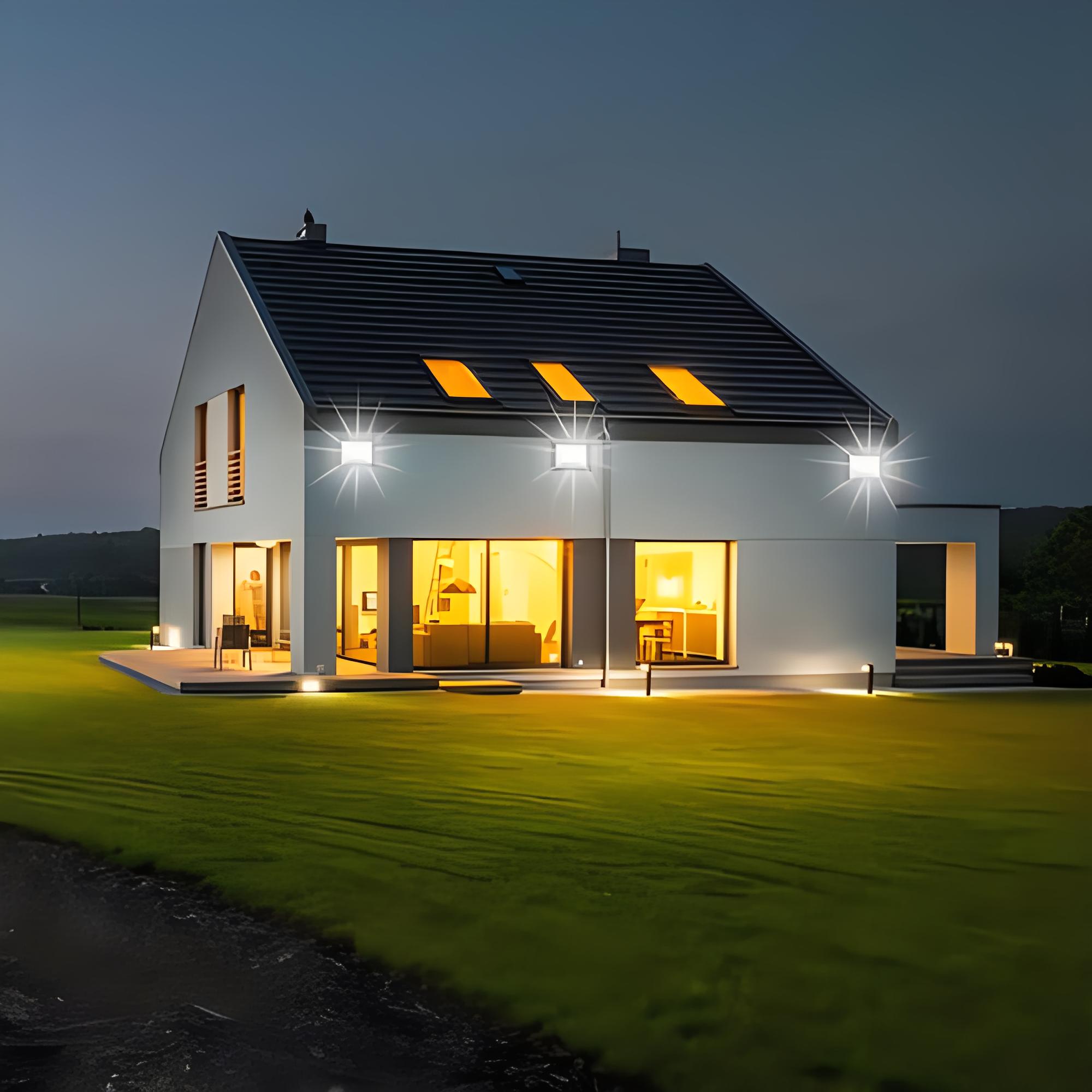Working principle of solar floodlights
Solar floodlights, as a type of lighting equipment that utilizes solar energy for power generation, are increasingly favored and applied by more and more people due to their green, clean, and renewable characteristics. Understanding the working principle of solar floodlights helps us better understand their high-efficiency and energy-saving advantages. This article will provide you with a detailed analysis of the working principle of solar floodlights, allowing green energy to illuminate infinite possibilities.
The working principle of solar floodlights can be simply divided into two parts: the generation and storage of solar panels, and the illumination of LED light sources.
Power generation and battery energy storage of solar panels:
Solar panels are the core components of solar floodlights, mainly used to convert solar energy into electrical energy. Solar panels are composed of multiple photovoltaic cells, which use semiconductor materials to absorb photons from sunlight and release electrons, forming electrical energy. When sunlight shines on the solar panel, the solar cell produces direct current (DC). This type of direct current is controlled by a regulator and battery management system and stored in the built-in battery.
Lighting of LED light sources:
The electrical energy stored in solar panels is released at night or when lighting is needed, and connected to LED lamps through circuits to achieve lighting effects. LED light source is a type of semiconductor light-emitting diode, which has the characteristics of high brightness, low energy consumption, and long lifespan. When current passes through an LED light source, electrons in the semiconductor material combine with holes to generate energy and emit light. By changing the magnitude and frequency of the current, the brightness and color of the LED can be controlled.

At night or when lighting is needed, the circuit system of the solar floodlight will automatically supply the energy stored in the battery to the LED light source, making it emit light. Due to the ability of solar panels to continuously absorb sunlight for power generation and store excess energy in the battery, solar floodlights can still provide continuous illumination even in continuous rainy weather or when there is no sunlight at night.
In summary, the working principle of solar floodlights is to convert sunlight into electricity through solar panels, store it in the battery, and then achieve lighting effects through LED light sources. Its unique working principle makes solar floodlights an efficient, energy-saving, and environmentally friendly lighting device. In future development, we believe that the advancement of solar technology will further enhance the performance and application range of solar floodlights, allowing green energy to illuminate more infinite possibilities.












